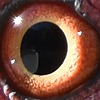HOME | DD
 TheBootesArtVoid — Wagtail Goes 'Cheep Cheep Cheep!' (Wild)
TheBootesArtVoid — Wagtail Goes 'Cheep Cheep Cheep!' (Wild)

#animal #animalphotography #animals #australia #australian #australiananimals #australianwildlife #bird #birds #natural #nature #naturephotography #photo #photography #photographyanimals #photographynature #photographyphoto #photos #wagtail #wildlife #wildlifeart #wildlifephotography #birdphotography #wagtails #wildlifereferencephoto #thebootesartvoid
Published: 2023-05-28 21:02:22 +0000 UTC; Views: 1077; Favourites: 78; Downloads: 0
Redirect to original
Description
Species Name: Willy Wagtail
Species Latin Name: Rhipidura leucophrys
Native To: Australia, New Guinea, Solomon Islands, The Bismark Archipelago, Eastern Indonesia
Conservation Status: Least Concern
Sub Species:
Rhipidura leucophrys Leucophrys (Located in most parts of Australia)
Rhipidura leucophrys Picata (Located in northern Australia, northern Western Australia, and Queensland)
Rhipidura leucophrys Melaleuca (Located Eastern Indonesia, Solomon Islands, and the Bismark Archipelago)
Photo Taken At: Serendip Sanctuary
Size (length): 19-21.5g (7.5 – 8.5 inches)
Weight: 17-24g (0.6 – 0.85 oz)
Tail Length: 10-11cm (4 inches)
Beak Size: 1.64-1.93cm (0.75 inches)
Lifespan: 15 years
Description:
These small birds consist mostly of black feathers across the majority of their bodies with exception to the white feathers on their chest, belly and alongtheir brow. They have distintive long tail feathers, a short black beak, and slender black legs and feet. Their eyes appear to be black as well.
Diet:
The Willy Wagtail is a carnivorous active feeder, you will most likely see one of these birds darting about snatching insects out of the air. These birds are opportunistic hunters and will eat a variety of different insects and small animals. Their diet will consist of various insects such as butterflies, moths, flies, beetles, dragonflies, spiders, centipedes, millipedes, ticks, and a variety of other bugs. It has been noted that in some cases that these birds will eat small lizards such as skinks and geckos although it is unclear to what extent these birds will feed on such animals.
Behaviour:
This small bird gets it name due to the way this bird will turn its body back and forth whilst its tail feathers move in sync. The reason why this bird does this is unclear but it appears to mostly be done when the bird is actively searching for food to eat. As it is an active eater it will spend most of its day looking for food. These birds are usually found alone or in a monogamous mating pair, these birds are also known to gather in small flocks at times.
These birds are highly territorial and will not hesitate to swoop and harass birds much larger than themselves such as magpies. It has been known for these birds to also fearlessly harass dogs, cats as well as humans should they wander too close to one of these birds nests.
The wagtail is a very vocal bird that has a variety of different vocalizations. The most notable vocalization this bird has is a warning call that consists of rapid 'chit-chit-chit-chit' sounds. This warning is sounded when potential rivals or threats wander into this birds territory.
These birds are monogamous and will form a lifelong bond with their mate. The mating period usually occurs between the months of July to December. The birds will create a cup shaped nest on a tree branch clear from foliage or cover less than 5 meters (16ft) off the ground. The nest itself will be made of grass stems, strips of bark, and other fibrous like material that is woven together like a spider web. The mother will lay about 2-4 eggs and and will incubate the eggs herself for 2 weeks. After the chicks hatch both parents will be responsible for feeding the chicks for another 2 weeks, during these 2 weeks the chicks will gradually get more food on their own. After 2 weeks of the chicks hatching the parents will drive them out of the parents territory forcing them to fend for themselves.
Further Reading (general information):
Wikipedia: Willie wagtail - Wikipedia
Birdlife: Willie Wagtail | BirdLife Australia
Animalia: Willie Wagtail - Facts, Diet, Habitat & Pictures on Animalia.bio
Backyard Buddies: Willie Wagtail - Backyard Buddies
Related content
Comments: 2

👍: 1 ⏩: 1

👍: 0 ⏩: 0


























